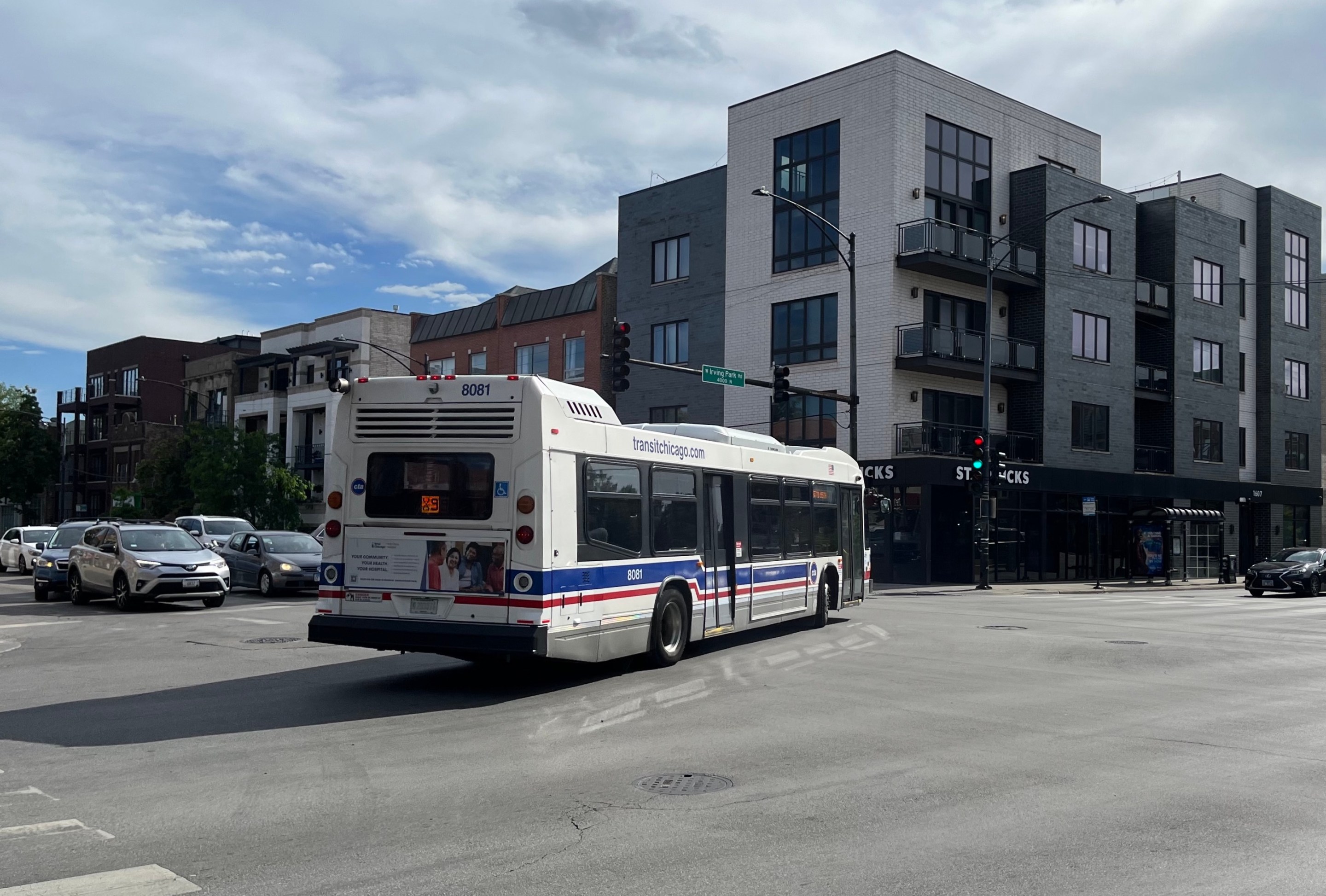
At least 116 people took part in Thursday's Zoom community meeting on the planned extension of the CTA's 9 Ashland Avenue (1600 W.) bus corridor, hosted by the 47th Ward. As Streetsblog Chicaqo discussed last week, the proposal would have the line go a mile further north of its current northernmost stop on Ashland at Irving Park Road (4000 N.)
Currently northbound 9 Ashland buses head east from Ashland on Irving Park to Clark Street (about 1330 W. here), then head northwest a block to the northern terminus of the route at Belle Plaine Avenue (4100 N.). The new 9 Ashland route would instead continue north on Ashland to connect with the recently rehabbed Ravenswood Metra station at Lawrence Avenue (4800 N.), creating many new commuting options.

In the past there has been some resistance to extending the Ashland bus route north from neighbors – see the discussion at the end of this 2013 SBC article. They mentioned everything from opposition to converting car-parking spots for bus stops, to questionable worries about their homes' foundations being damaged by vibrations.
Predictably, a few residents at yesterday's hearing did mention concerns about the new plan, most of which were addressed by CTA and ward staff. And at least one neighbor insisted that the additional service would bring crime to the neighborhood. But it appeared that the vast majority of attendees strongly support the proposal.
"The changes to Clark Street from Irving Park to Montrose, where the bus currently lays over, prompted the CTA to look for another terminal," explained local alder Matt Martin at the start of the meeting. He was referring to the new raised/protected bike lanes on that corridor. "Our office had worked with [the CTA] to identify with them ultimately the Ravenswood Metra station as an ideal alternative to the terminus of that route."

"I'd also note that over the last number of years our office in the 47th Ward has heard from a number of neighbors, including seniors at the former Bethany Methodist retirement home [4950 N. Ashland Ave.], which is on Ashland just north of Lawrence," Ald. Martin added. "They were hoping to have their stretch also have the Ashland extension. So we'd heard from residents for some time about this possibility, and feel that this extension will provide bus access to thousands of new neighbors, as well as connections to two new bus lines [78 Montrose and 81 Lawrence] as well as the Ravenswood Metra."
Next up was John Czerwinski, director of service planning and traffic engineering for the CTA. He said the current 9 Ashland route has been in place since The Chicago Surface Lines started operating streetcars there in 1912. "There is a large gap in north-south bus service to the north. There's really no routes that run directly north and south, east of Damen Avenue [2000 W.] from this terminal. That's kind of a problem that's resulted from this.
Czerwinski then discussed the new 9 Ashland route, which would head north past Irving Park to Wilson Avenue (4600 N.), west on Wilson to Ravenswood Avenue (1800 W.), and then north on Ravenswood to a layover spot next to the Metra station, just south of Lawrence. From there, southbound buses will head east on Lawrence, and then south on Ashland.
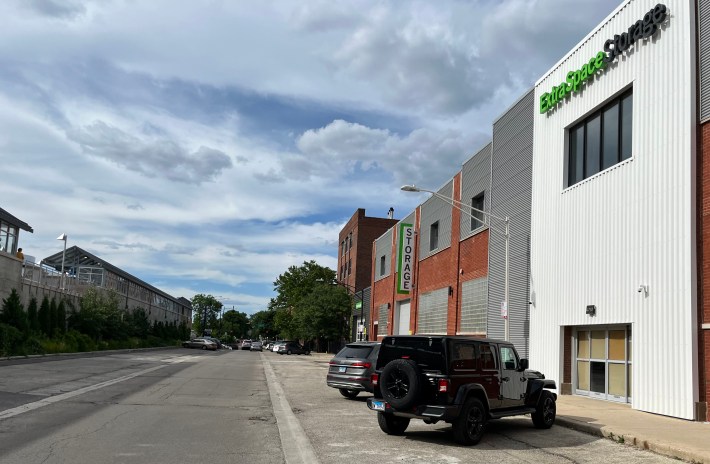
The CTA staffer said the existing bus frequency will be maintained on the new route. "Basically all the existing trips are going to be extended north," he said. "There will be some minor changes to the existing schedule, but you should expect the same level of service you're seeing south of Irving Park right now."
He added that existing X9 Ashland Express service is still going to stay the same, heading east from Ashland on Irving Park to Broadway (860 W.) "So you can still make that connection further east on Irving Park. That route connects all the way to Irving Park and Broadway with a connection to the Red Line, It operates during the peak period."
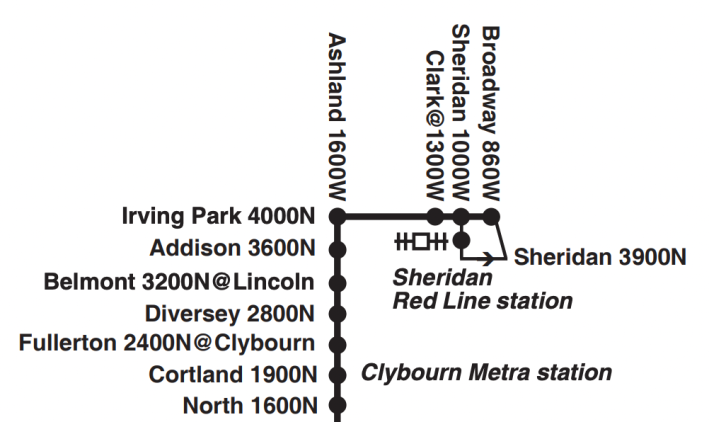
Czerwinski said the 9 Ashland route changes will go into effect on August 25 with the CTA's fall schedule.
Discussing the impacts of the 9 Ashland extension, he noted that the CTA estimates that the new route will serve 21,500 more residents, 95 percent more than the north end of the current itinerary, which ends next to Graceland Cemetery. The agency also says the extension wil provide access to 15,000 more jobs than the status quo.
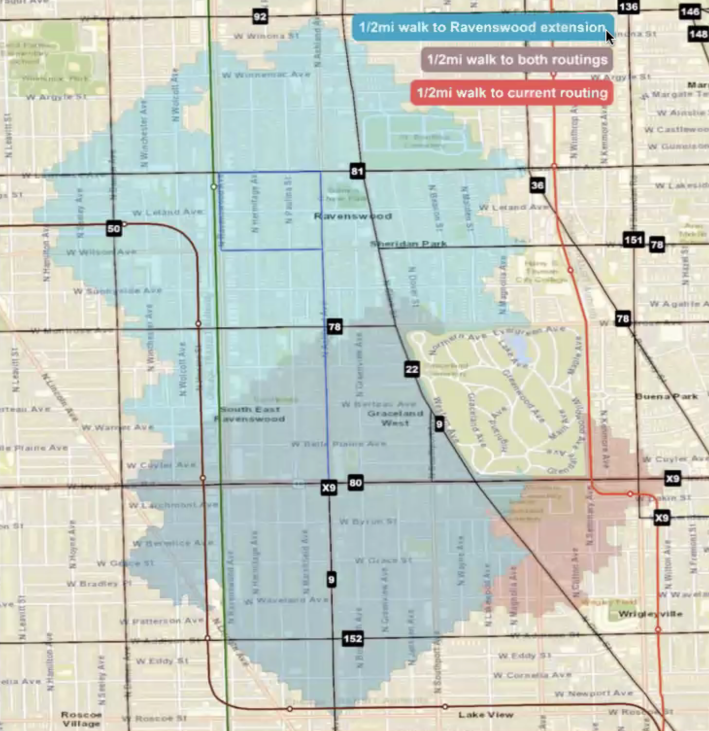
Next Czerwinski discussed the ten new bus stop locations, generally every two blocks or a quarter of a mile from each other. Aside from the Lawrence/Ashland stop, which already exists to serve eastbound 81 Lawrence buses, creating the new stops this summer will typically involve converting about four car parking spaces.

Before any car-focused folks get outraged about losing those car spots, Czerwinski noted that removing the existing Belle Plaine/Clark terminal will free up about 10 non-permitted parking spaces on Clark.

Moreover, next year as part of a Chicago Department of Transportation repaving project on Ashland, the new 9 Ashland stops will get "bus bulbs". These are sidewalk extensions that allow bus operators to pick up passengers while staying in the travel lane, instead of having to pull all the way to the current curb. Not only will that reduce travel time for CTA riders and shorten pedestrian crossing distances, it will also allow the restoration about 12 car spots by reducing the amount of space needed for the bus stops.

After that, Czerwinski discussed the new route terminal location on the east side of Ravenswood, between Lawrence and Leland (4700 N.) avenues. He noted that, in addition to rock star-level Metra access, this location will be served by the upcoming Leland and Ravenswood "neighborhood greenway" side street bicycle routes. He noted that 22 zoned industrial car spaces will be converted for the terminal, "but it will open up a lot of opportunities for this area."
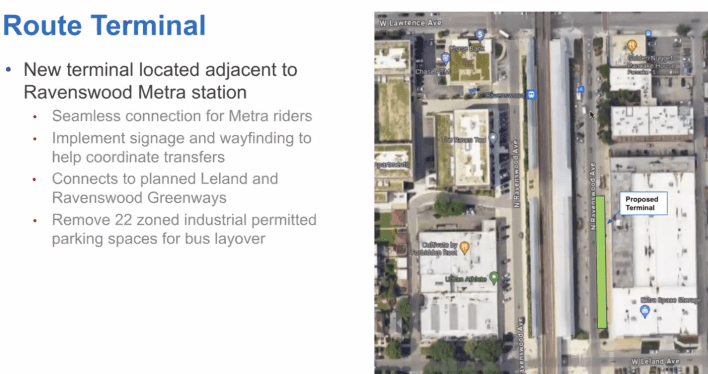
During the meeting, some people who live on Wilson indicated they aren't happy about the addition of bus service on their blocks. They argued that the Ashland route should head west two blocks earlier at Montrose Avenue (4400 N.) instead.
"Those of us that live here on Wilson... will literally have a bus stop in front of our homes with the noise, air, traffic pollution non-stop," said Erin Battison McCall in the Zoom chat. "There is no reason that this can’t be routed along Montrose, then up Ravenswood where the infrastructure already exists and is less intrusive and impactful, while still affording the important access."
But Czerwinski explained why Wilson, which was previously used for the CTA's #145 Wilson/Michigan route until 2012, was chosen instead. Using Montrose would have meant less time on Ashland, which would be less helpful for closing the north-south service gap.

Czerwinsky noted that using Montrose to access Ravenswood would also add two more blocks of travel on Ravenswood. This wouldn't be ideal for buses, since it has many loading docks and "back out" angled parking parking spaces, which could cause bus delays.
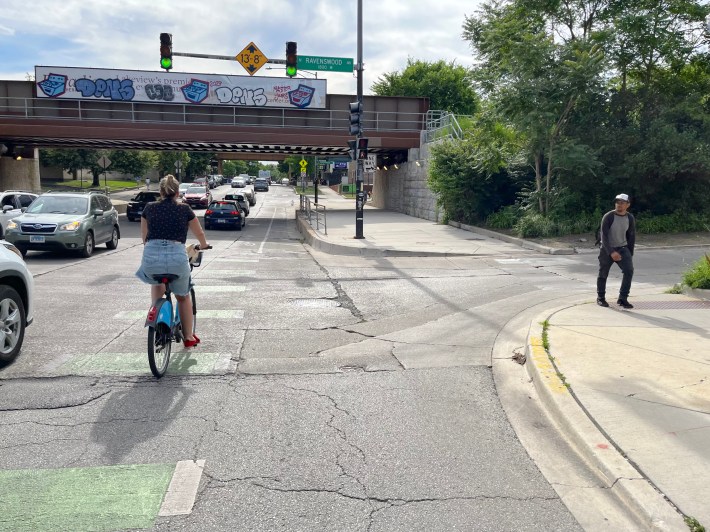
The CTA staffer added that the turn from Montrose onto Ravenswood is also tighter and trickier than making that move from Wilson.
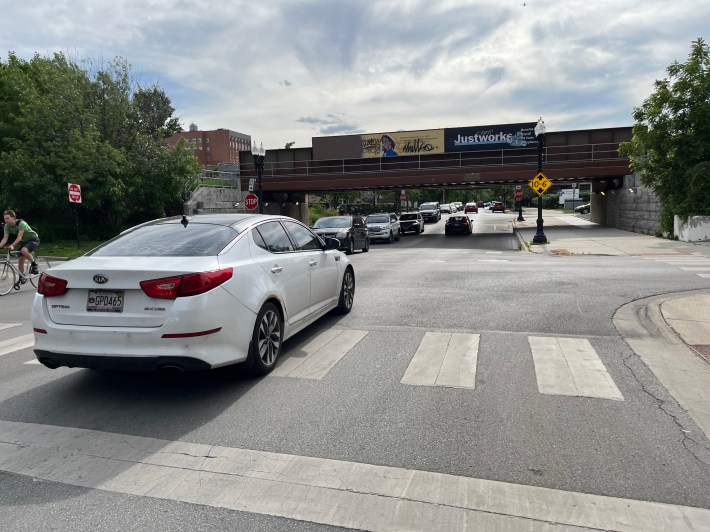
Another attendee who opposed the plan was Lawrence Tokar. "People bought property on Ashland from Irving park to Foster," he wrote. "This will affect property values and bring problems into this neighborhood... Wait till Ravenswood starts getting robbed."
47th Ward Chief of Staff Joshua Mark responded by asking attendees to keep their comments civil, noting that all Chicagoans deserves quality transit access.
But the great majority of commenters seemed excited about the plans. "This is great and a very welcome extension of the Ashland bus line," said Kenneth Miller in the chat. "As a Ravinia member, this service to the Metra station is welcome." The Ravenswood train stop serves the Union Pacific North line, which stops right next to the outdoor music venue in suburban Highland Park.
"On behalf of Better Streets Chicago, I’d like to express support for this extension," wrote Michael Podgers, policy lead for the grassroots sustainable transportation advocacy group. "It’s a thoughtful and impactful change that wisely facilitates more intermodal connections. This is the type of change we should see to the entire system."
"Really appreciate all the comments emphasizing that adding bus service helps to minimize traffic and safety issues," said Katharine Cikanek in the chat. "Heavy car traffic is the main driver of [the problems that opponents blamed on buses] —not improved public transit. Again, much gratitude to [Ald. Matt Martin] and his office, CDOT, and the CTA!"
View a recording of Thursday's meeting here.

Did you appreciate this post? Please consider making a tax-deductible donation.
